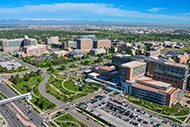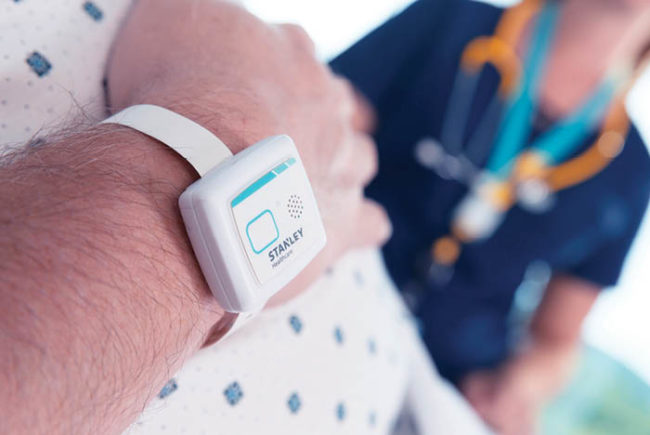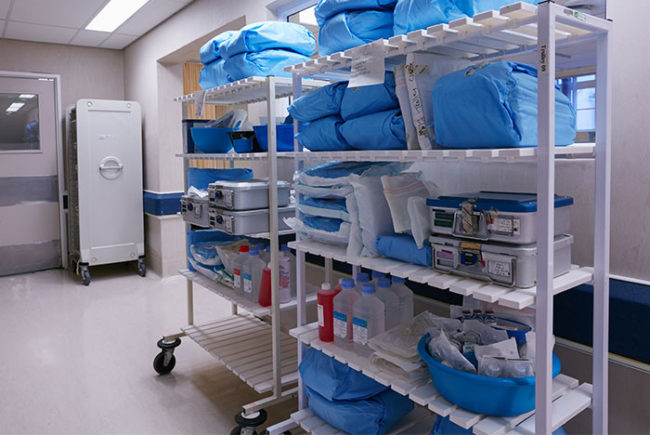Real-time locating systems (RTLS) have come a long way in the past 10 years and now serve as a valuable tool for improving hospital workflow, safety and security. They even combine big data and analytics to open up other avenues of productivity. However, they still have a way to go when it comes to market penetration in the health care industry.
Within the past decade, RTLS technology has established a foothold in health care facilities with an estimated adoption rate of 15 to 20 percent, but this figure appears to be rapidly accelerating as hospitals see the additional benefits of enterprise locating services, and leveraging RTLS for advanced-use cases well beyond asset tracking, according to Ari Naim, CEO, CenTrak, Newtown, Pa.
You may also like |
| RTLS and environmental services |
| Monitoring hospital operations |
| Selecting a cost-effective RTLS |
|
|
“RTLS adoption is growing at a rapid rate and transitioning from a nice-to-have to a must-have,” says Arne Oyen, CEO, Sonitor, Stamford, Conn. “Although it is difficult to get exact numbers on actual penetration, it is estimated that approximately 15 percent of U.S. hospitals have deployed RTLS; however, many of these are only departmental deployments, as opposed to enterprisewide, so there is a lot more potential growth.”
With technological improvements in speed and accuracy, experts see a shift from using RTLS for simple asset tracking to more advanced applications such as patient locating, workflow automation and hand-hygiene compliance. “With advancements in the clinical-grade locating infrastructure, the industry has realized the true value of using RTLS technology to integrate information into other enterprise systems and to automate operational workflows,” Naim says.
“The real advances we see are in what health care systems are doing with RTLS software, data and analytics,” says Gary Wittbrodt, director of product management, Versus Technology Inc., Traverse City, Mich. “When looking at the agenda for our recent Versus User Experience, you can see what the most advanced RTLS users are accomplishing with their systems — everything from improving patient flow and capacity in the emergency department to coordinating complex surgical care and breaking down data silos.”
More and more, hospitals are interested in advanced-use cases such as staff workflow and patient flow that go beyond just finding things to improving processes, agrees Joel Cook, senior director of health care solutions, Stanley Healthcare, Waltham, Mass. “RTLS data gives visibility to bottlenecks as they are emerging so they can be fixed, while also providing a data set for long-term process improvement,” he explains. “The cutting edge here is applications such as predictive scheduling for a clinic or operating room based on historical data.”
Another area of growth is patient safety applications such as hand-hygiene monitoring and infant security, where RTLS technology replaces manual approaches. There also is interest in integrating RTLS into information systems to leverage location data in new ways. “For example, integration to nurse call systems enables the analysis of key benchmarks for patient satisfaction,” Cook adds.
Advanced-use cases rely on a layer of analytics to transform RTLS data into actionable insight. “Providers want to extract information from RTLS because it provides unique data points — time and location. Our analytics package, MobileView Analytics, provides visual dashboards for patient flow, asset management, environmental monitoring and hand-hygiene compliance monitoring solutions,” Cook says.
Advances in technology
Behind increased usage are advances in RTLS technology. Alex Gillan, senior product manager, GE Healthcare, Milwaukee, sees three things:
- RTLS hardware that significantly lowers the cost of the RTLS infrastructure, decreases installation time, and enables easier and quicker expansion and reconfiguration of the infrastructure;
- Moving the application from the hospital to the cloud, enabling access from anywhere and removing the complexity of maintaining an on-site application installation;
- Combining big data and analytics to open up other avenues of productivity.
RTLS based on Bluetooth Low Energy (BLE)/Wi-Fi is another advance being touted by manufacturers. BLE beacons that are managed over Wi-Fi provide a cost-effective technology option for supporting traditional RTLS applications and mobile RTLS, enabling mobility as well as new applications such as wayfinding, automated check-in and targeted messaging. “Battery-powered and simple to install, BLE beacon deployments are less expensive than traditional RTLS solutions. They deliver high accuracy and low latency, which are needed for workflow optimization applications,” says Bernard Lee, vice president of marketing, Awarepoint Corp., San Diego.
Awarepoint’s Location as a Service consists of a BLE/Wi-Fi platform, cloud-hosted software and managed services. It enables organizations to manage traditional RTLS applications, leverage mobile devices for workflow optimization and bring context to the clinical/electronic health record ecosystem to make them smarter. Two types of BLE beacons are available: enterprise and high accuracy. The enterprise beacons provide location accuracy down to 1 meter. The high-accuracy beacons provide high precision, sub-2 seconds latency room/zone entry/exit detection.
Another advance is that more efficient and wireless infrastructures are doing more with less, according to Oyen. For example,the Sonitor Sense location infrastructure can define up to four discrete location zones with a single battery-powered ultrasound location transmitter. Use of environmentally friendly, low-cost batteries and lower power-consumption technologies are other improvements.
The latest RTLS innovations are designed to increase patient satisfaction as well. Intelligent InSites, Fargo, N.D., offers several RTLS operational intelligence solutions that are in use at clinics and acute care facilities worldwide. The company’s patient flow solution is designed to reduce patient wait time, improve care coordination and maximize clinic facility utilization.
“Real-time location data is captured as patients and employees move throughout the facility. Business rules that are easily configured in the software trigger status changes, notifications and visual cues such as color-coding on care coordination view boards — giving staff immediate line-of-sight direction on where to go and which patient to see next,” says Shane Waslaski, president and CEO.
The Sonitor Sense ultrasound-based RTLS platform is powered by the company’s SmartZoning technology and delivers accurate indoor-positioning data for room-, bay- and chair-level tracking as well as location accuracy and creating choke points.
“One of the key benefits of ultrasound is that sound waves are contained and reflected by walls, including glass and other internal structures and, as a result, provide full room coverage. Because sound is naturally reflected off of solid surfaces, tags can receive signals even when not in direct line of sight of the location transmitter,” Oyen says.
Extracting meaningful data
Data collection is key to a successful RTLS, experts agree. In fact, the ability to consume the massive amount of data from an RTLS and condense it into meaningful location events is critical to enabling analysis. “The market has only scratched the surface on the use of this data. Apart from the obvious tracking and managing of tagged assets, data can point us to solutions such as workflow improvements, wayfinding, on-patient time and many others,” Gillan says.
RTLS platforms can be used to store location data and provide insight into process bottlenecks that help facilities managers discover operational improvement opportunities, according to Emily Nardone, director of product marketing, Airista Flow, Sparks, Md. “Leading RTLS platforms also can be used to play back emergency events such as a patient attack for response-procedure analysis, which makes RTLS a critical technology where [closed-circuit television] cameras are not an option.”
Integrated RTLS platforms also can record patient-provider interactions as well as associated equipment functions to provide hospital administrators with contact-tracing information in the event of an infectious outbreak. “The opportunity to isolate communicable diseases and send an alert to those at risk greatly reduces the threat of infections,” Naim says.
While data collection is a required component of any RTLS installation, the data have to be reliable, timely and accurate, experts agree. “This is the key to documenting ongoing return on investment. For example, the ability to automatically document door-to-doctor times and other metrics in the emergency department provides previously unattainable accuracy for reporting quality measures,” Wittbrodt notes.
“On inpatient floors, RTLS collect data on nurse rounding, documenting the patient care that nurses provide. In the operating room, RTLS can provide data on patient flow, helping to optimize capacity in these critical areas. With asset tracking, return on investment comes from the ability to understand how often your fleet of IV pumps, for example, are seen in patient rooms vs. supply closets — providing key data on utilization to evaluate purchasing requests,” he adds.
Hospitals looking for enterprisewide, reliable RTLS solutions should seek flexible technology offerings that are truly wireless to avoid installation and reliability issues, according to Nardone. For example, Airista Flow offers multiple technology options including BLE, and both passive and active radio-frequency identification — all over Wi-Fi — which makes it 100 percent wire-free, allowing for complete implementation in about 10 days for a typical hospital setting.
Total cost of ownership is a major variable that health systems should consider when evaluating RTLS, experts agree. Each vendor uses different RTLS technologies with varying levels of location precision, from zone-level all the way to chair-level — and these precision levels have different hardware requirements.
“Often hospitals are surprised by hidden costs of infrastructure expansion when they seek to leverage their RTLS for more than just basic asset tracking. Administrators should chart a long-range goal for how they want to leverage the technology and understand the necessary infrastructure, maintenance and associated costs over time,” Wittbrodt says.
Continued evolution
RTLS providers see continued evolution of the technology. “With the spread of smartphones that are BLE-enabled, new applications or methods will emerge for patient flow, wayfinding and patient engagement,” says Cook, who also expects the cloud to make RTLS appealing to small hospitals.
Waslaski anticipates the delivery and use of targeted apps that provide decision support for health care personnel, from transport staff to physicians to C-suite executives.
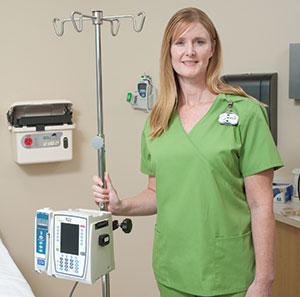
Linking in supply
Location data to alert distribution teams when units are low on IV pumps or other critical assets, ensuring nurses always have the equipment they need for patient care.
Versus Technology Inc.
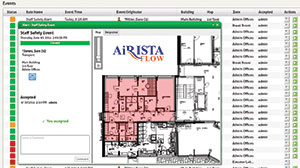
Simple safety
Airista Flow provides a simplistic, customizable staff safety solutions for hospitals enterprisewide.
Airista, LLC
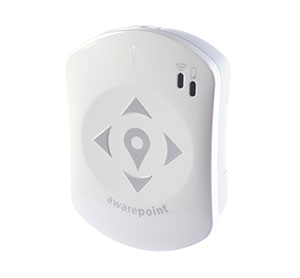
Well aware
Bluetooth Low Energy (BLE) Intelligent Beacon is battery-powered and easy to install.
Awarepoint Corp.
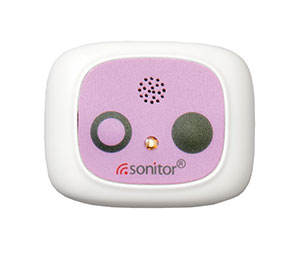
Right place, right time
SmartTags incorporate proprietary ultrasound positioning technology with Wi-Fi and LF technologies.
Sonitor Technologies Inc.
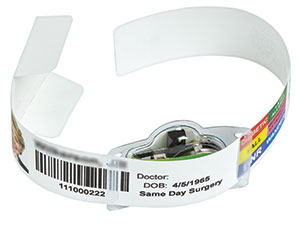
Catching signals
This 31-day disposable waterproof tag can be used to track, locate, protect and identify a patient anywhere in a facility within seconds. CenTrak
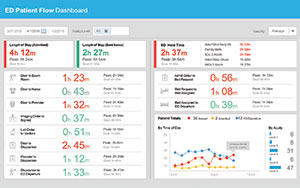
Minutes count
This patient-flow solution is designed to reduce patient wait time and improve care coordination.
Intelligent InSites
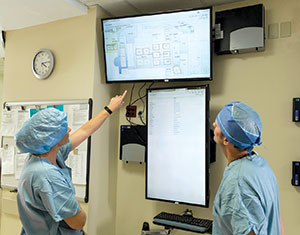
Taking action
Visual dashboards turn RTLS data into actionable information for clinicians.
Stanley Healthcare



